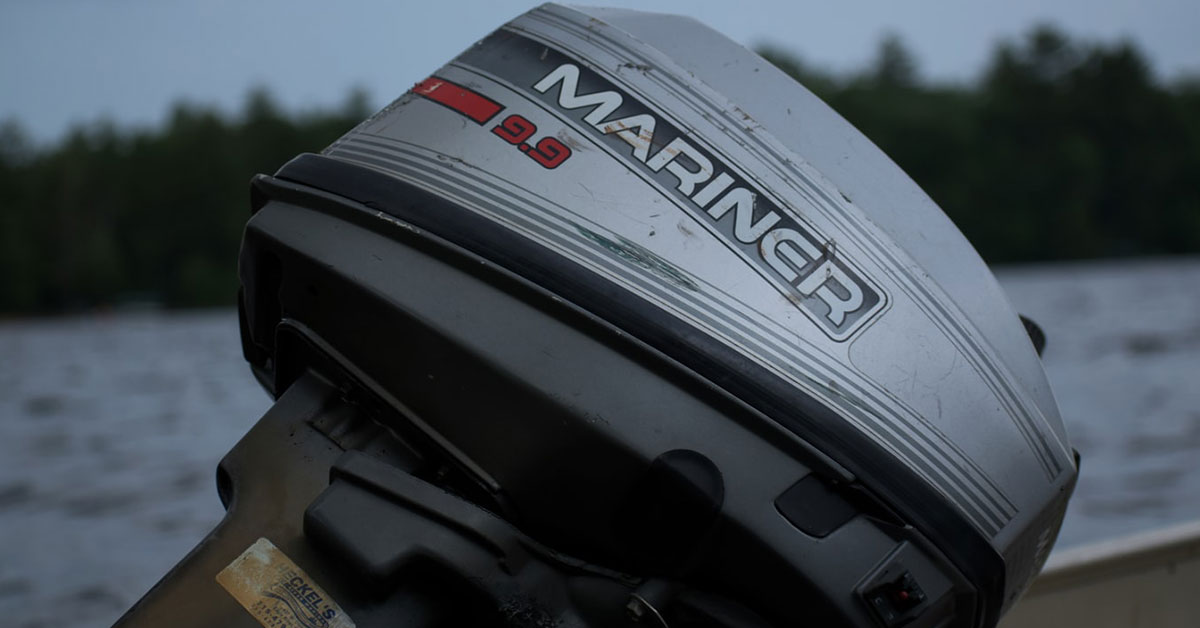Being the proud owner of a motorboat is synonymous with discovery, adventure, freedom, relaxation and so on… All these benefits, the source of so much pleasure and so many incredible experiences, are not without their share of responsibilities and a healthy dose of expertise to maintain your boat for the long term. Ensuring your vessel has a long life for many years of safe boating requires methodical maintenance of a certain number of essential elements. Thus, from the hull to the mechanics, nothing can be left to chance. Consistency, regularity and precision must be your watchwords, and that is why we’re giving you a detailed description of all the tasks you should carry out in our ultimate guide.
1. Maintaining the hull of your boat
In our maintenance guide, we will first focus our attention on hull maintenance. You should pay extra attention to preventing osmosis by maintaining your polyester boat in perfect condition, or even by applying a preventive treatment.
Maintaining a polyester boat starts with cleaning the hull, for which you use special products, fresh water and… elbow grease. However, when it comes to careening, investment in refurbishment or repair work is often needed to avoid major damage. Applying a gelcoat fills any cracks.
When it comes to repainting your boat, a task whose purpose is as much aesthetic as it is technical, you will have to differentiate between work on the living parts (the immersed section of the hull) and work on the dead parts. For the living parts, you need to apply an antifouling paint that will prevent dirt from sticking to the hull. First of all, the surface needs cleaning and renovating, then the paint must be applied in several coats. For the dead parts, you need to consider renovating and sanding the surface before applying a marine or polyurethane paint.
Polishing your boat will add an extra layer of protection, as well as making it shine. The product should be applied with a cloth and you need to polish the boat using an electric polisher, which you then also use to coat the hull with a finishing wax. An economical alternative to painting and polishing is to cover the dead parts with a self-adhesive layer. This is called wrapping. This precision work is usually carried out by a professional.

2. Deck tasks you mustn’t neglect if you want to maintain your boat
The hull is not the only area on your boat that is at the mercy of the elements, and the second area you need to consider when you maintain your boat is the deck. In terms of cleaning, you spray polyester boat decks with a universal cleaner. Teak boat decks however must be cleaned with a mixture of water and mild shampoo before retouching them with a special product and possibly nourishing oil or a waterproof sealant. For a gleaming (and well-protected) wooden deck, some people choose to varnish their teak, which should only be done after light sanding.
If you want to renovate a polyester deck, you need to degrease it then sand it and then potentially fill any cracks with an epoxy coating. If you follow the repair routine step by step, including the two-component lacquer finish, the deck will soon look like new again.
If you want to clean thoroughly, don’t forget about the rather unpleasant task of cleaning the bilge system. This may mean drying the bilge out, or cleaning it from top to bottom. With option one, you can scoop up any liquids that shouldn’t end up in the docks, and then use a “liquid and dust” vacuum cleaner. For option two, you may need to get rid of the oil that has accumulated at the bottom of the bilge, before thoroughly cleaning it using a boat cleaning product or degreasing agent such as St Marc detergent.

3. How to avoid mould and rust on your boat
It’s not just dirt in the water that stops your polyester boat from remaining a gleaming white. It must be protected and, where necessary, mould and rust must be removed.
To prevent the growth of mould, you have to rid the boat of moisture. You must keep it completely dry when wintering it, preferably by drying it in the sun before storage. It can be covered or “filmed”, and ventilated during the wintering period.
Other means offer additional protection against moisture, such as moisture absorbers and silica gel beads. Mould that is already established can be removed with a scraper and a mouldproofing product, or oxalic acid, white vinegar, borax, and so on. The main thing is to always let it dry out properly so that the problem does not reappear.
As far as rust is concerned, you mostly just need to keep your stainless steel clean and well-maintained. Clean water and a microfibre cloth are good for daily cleaning, while you can use a special liquid product or polishing paste on very dirty stainless steel, which penetrates deeper and removes the first traces of rust. If you’ve still got rust left, then use the rustproofing products or rust remover gel that turns rust passive, as these will almost clear rust “on their own” within a few seconds after application to stainless steel or a gelcoat that is in contact with stainless steel.
Become a boat owner
If you are looking for a boat for sale, consult the available used boat ads.
4. Maintaining your boat’s engine and electronics
Let’s move on to boat engine maintenance which requires a certain amount of care and attention.
For an outboard engine: the turbine, whose function is to rotate seawater to cool the engine, is a part that deteriorates and changes approximately every year.
To change the turbine on an outboard motor, you must:
- Remove the turbine drive
- Change the oil
- Unscrew the outlet gasket to get to the pump
- use this opportunity to file the notches on the gear shaft before greasing it so you can install the new turbine
You should also change the oil in an outboard engine once a year or every 100 hours. After liquidising the oil by starting the engine in water for a few minutes, you can do an oil change by introducing air at the level cap outlet, and letting the oil drain into a tank at the drain cap outlet. You should then change the seals on the caps, then fill the engine from the bottom by injecting oil with a filling pump until it overflows from the top.
For an inboard engine: the cooling system requires complete cleaning. Fresh water systems require the coolant to be changed by flushing and refilling. During wintering, seawater systems can be cleaned initially with fresh water, and the filter inlet plate must be removed to check the turbine and change it if necessary (FYI change it every 500 hours of sailing as a rough guide).
Every two years, you need to check the the heat exchange system by checking if the thermostat is working properly and checking the anti-siphon valve. As a general rule, salt deposits and crystals must be removed from the cooling circuit.
To clean the engine air filter you need:
- Remove it by unscrewing the screws holding it in place
- Clean or replace the foam based on what condition it is in
- Dust the filter’s various elements (pleated paper, case, etc.)
- While you’re doing all this, you must also check the seals
To maintain your boat’s timing belt, consider replacing it every 2,000 hours of use. The belt’s tension must be checked: it mustn’t have any “give” over 10 mm, nor must it touch the pulley track, but must be tight and touch it on the sides only.
Whether you’ve got an outboard or inboard engine, the anodes which protect the boat from corrosion from water electrolysis (by getting corroded themselves), must be cleaned with a metal brush and replaced when their wear rate reaches 75%. Rapid wear and tear can be indicative of an electrical leak.
Maintain your boat battery is essential for safe sailing: you need to make sure both it and the shore chargers are used properly (especially the way you store and charge these), which means checking its lifespan and preventing untimely breakdowns. The battery must be charged for winter storage, but no more than 60% if it is lithium. It must be unplugged, the pins must be greased and then it must be stored in a cool, dry place.

5. Maintain the sails
On a sailboat, sail maintenance is essential to ensure safe sailing and optimal performance at sea. To prolong their life as much as possible, here are some maintenance tips once back in port:
- Clean the sails regularly with fresh water and mild soap. Avoid using abrasive products or solvents that could damage the fabric fibers
- Rinse sails thoroughly after each use, especially if you have sailed in salt water. Salts and minerals can damage the fabric fibers if not removed promptly.
- Avoid folding or furling the sails while they are still wet. This can lead to the formation of mold or stains and weaken the fabric fibers.
- Store the sails in a dry place out of direct sunlight. Avoid damp or poorly ventilated areas, which can promote mold growth.
- Regularly check the condition of the seams and reinforcements. Seams may loosen or tear over time, while reinforcements may wear or peel.
- Quickly repair small holes or tears. If you wait too long, the damage can get worse and increase repair costs.
Are you looking for a sailboat?
Consult now the advertisements of new or used sailboats
6. Consider wintering your boat to get off to a good start
Wintering is the most important end-of-season task to help you maintain your boat and prepare it for the cold season, which involves checks, protection and replacement of used parts.
Antifreeze, which reduces the temperature at which water turns to ice, prevents damage from the cold. Pour non-toxic boat-specific antifreeze into the engine, and plumbing antifreeze into areas of the boat that come into contact with water. Desalinate the engine using a wintering kit and then inject antifreeze. When the motor is running, discharged water is gradually replaced by the antifreeze.
Outboard motors can be desalinated with flushing lugs attached to the suction ports. You can clean them by mixing a special cleaner with the fuel, then the engine should be drained of oil and refilled with fresh oil. The oil filter should be changed too. This is usually when you would also change the turbine, flush the drive, check and change the spark plugs if necessary, and change the anodes.
Inboard engines should be desalinated, filled with antifreeze, and the block, elbows, manifolds and exchange systems should be flushed. The engine should then be protected from corrosion by a misting oil. This is also a good time to change any spark plugs, turbine, screws, seals, anodes, etc. The engine and drive oil should be flushed and replaced. Oil and petrol filters as well as water separators should be too. Gearbox fluid and belts should be checked. Everything should be rinsed and dried. Moving parts, universal joint shafts and propeller shafts should be greased. You may also want to apply a layer of paint to the drive as well.

